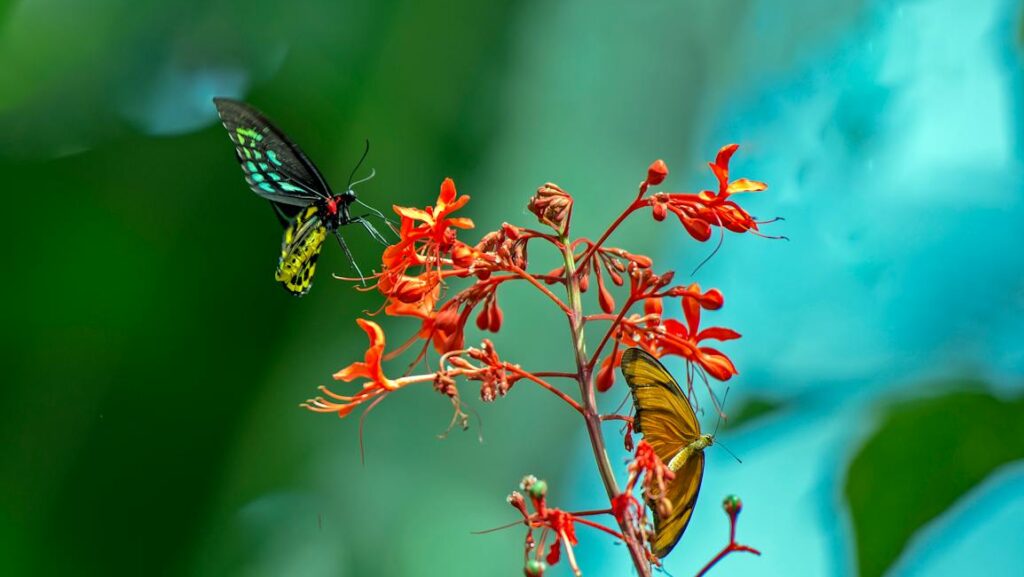
Pollinators are the unsung heroes of our ecosystems and food systems, transferring pollen between flowering plants and enabling plant reproduction. While honeybees often steal the spotlight in discussions about pollination, they’re just one player in a diverse cast of pollinating creatures. From nimble butterflies to night-flying moths, from tiny beetles to nectar-loving birds, the world of non-bee pollinators is fascinating and vital for biodiversity. These alternative pollinators contribute enormously to agricultural production and ecosystem health, often specializing in plants that bees might overlook or pollinating in conditions where bees are less active. As pollinator populations face threats worldwide, understanding and protecting these lesser-celebrated pollinators becomes increasingly important for maintaining healthy ecosystems and food security.
Butterflies: The Graceful Garden Helpers

Butterflies are among the most visually stunning pollinators, their delicate wings providing a beautiful sight as they flit from flower to flower collecting nectar. Unlike bees, butterflies have long, thin proboscises that allow them to reach deep into tubular flowers that other insects cannot access. Their bodies are less efficient at collecting pollen than the fuzzy bodies of bees, but they make up for this with the distances they can travel, sometimes pollinating plants across miles of landscape. Butterflies are particularly important for wildflowers and native plants, with species like monarchs and swallowtails maintaining intricate relationships with specific plant species that have evolved alongside them for millions of years. Additionally, many butterfly species can see ultraviolet patterns on flowers that are invisible to the human eye, guiding them to nectar sources that might be overlooked by other pollinators.
Moths: The Night Shift Pollinators

While butterflies work the day shift, moths take over pollination duties when the sun goes down, playing a crucial yet often overlooked role in plant reproduction. With over 160,000 species worldwide (compared to roughly 17,500 butterfly species), moths vastly outnumber their daylight counterparts and pollinate a tremendous variety of night-blooming plants. Many night-blooming flowers have evolved specifically to attract moths, featuring pale colors that stand out in moonlight and powerful fragrances that can guide moths from considerable distances. The yucca moth demonstrates one of the most remarkable pollinator relationships in nature, deliberately collecting and depositing pollen on yucca plants, then laying eggs in the developing fruit – a relationship so specialized that neither species can survive without the other. Research suggests that moths may be responsible for pollinating hundreds of agricultural and horticultural crop species, including some varieties of tobacco, jasmine, and certain orchids.
Hummingbirds: Aerial Acrobats of Pollination
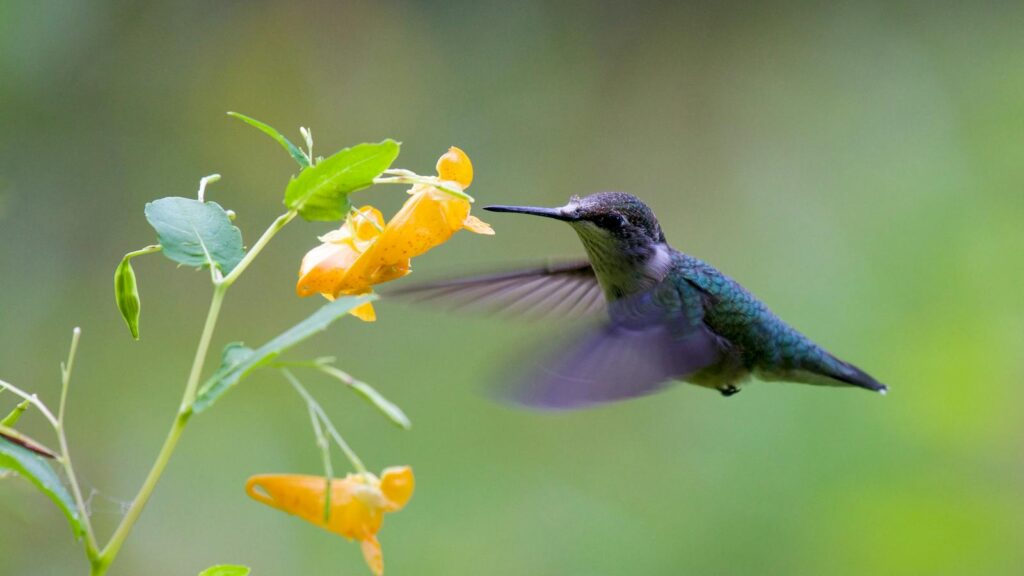
Hummingbirds represent some of the most specialized and efficient vertebrate pollinators, with remarkable adaptations that make them pollination powerhouses. Their long, slender bills and brush-tipped tongues allow them to extract nectar from deep, tubular flowers while hovering in mid-air, a feeding strategy that perfectly positions them to transfer pollen between blossoms. These tiny birds have extraordinarily high metabolic rates, visiting hundreds of flowers daily to sustain their energy needs, making them prolific pollinators wherever they occur. Unlike insect pollinators, hummingbirds can maintain activity in cooler temperatures and light rain, providing pollination services when many insects cannot function effectively. Flowers that have co-evolved with hummingbirds typically share distinctive traits: they’re often bright red or orange (colors that attract birds but not necessarily bees), produce copious nectar, have little or no fragrance (since birds have a poor sense of smell), and feature tubular shapes that match hummingbird bills.
Bats: The Flying Mammals That Feed Ecosystems
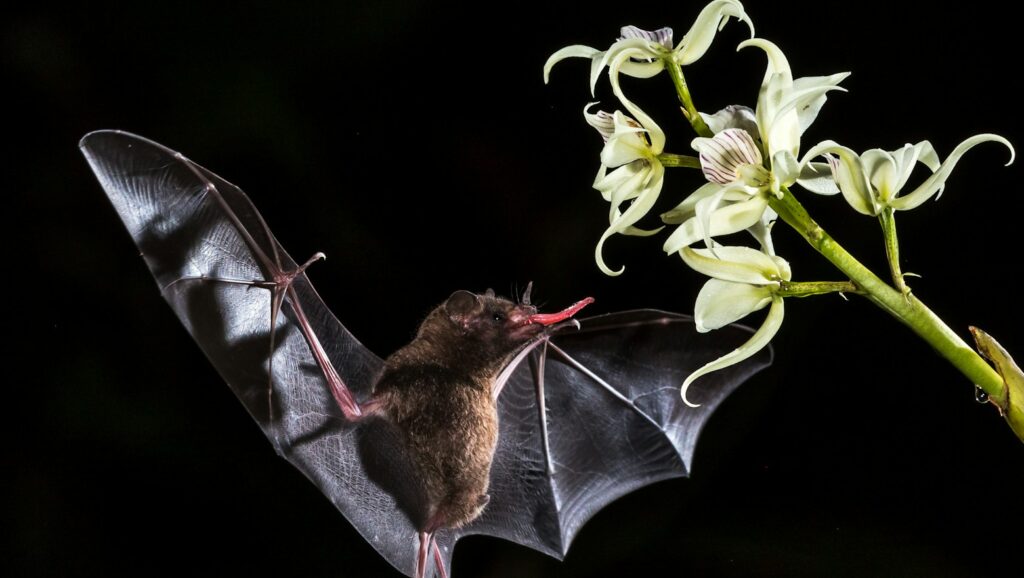
Bats might seem unlikely pollinators, but nectar-feeding bat species are crucial for the reproduction of over 500 plant species worldwide, including economically important crops like agave, durian, and various tropical fruits. These nocturnal mammals possess remarkable specializations for feeding on nectar, including elongated snouts, brush-like tongues, and reduced teeth that help them access flower resources efficiently. Unlike most other pollinators, nectar bats can carry relatively large amounts of pollen in their fur over long distances, sometimes traveling up to 30 miles in a single night, creating genetic connections between widely separated plant populations. In desert ecosystems, bat pollination becomes particularly important, with iconic plants like the saguaro cactus depending heavily on bat visitors for successful reproduction. The relationship between agave plants and lesser long-nosed bats represents one of the most commercially significant bat pollination systems, as these bats are essential for the natural reproduction of blue agave, the plant used to produce tequila.
Beetles: The Ancient Pollinators
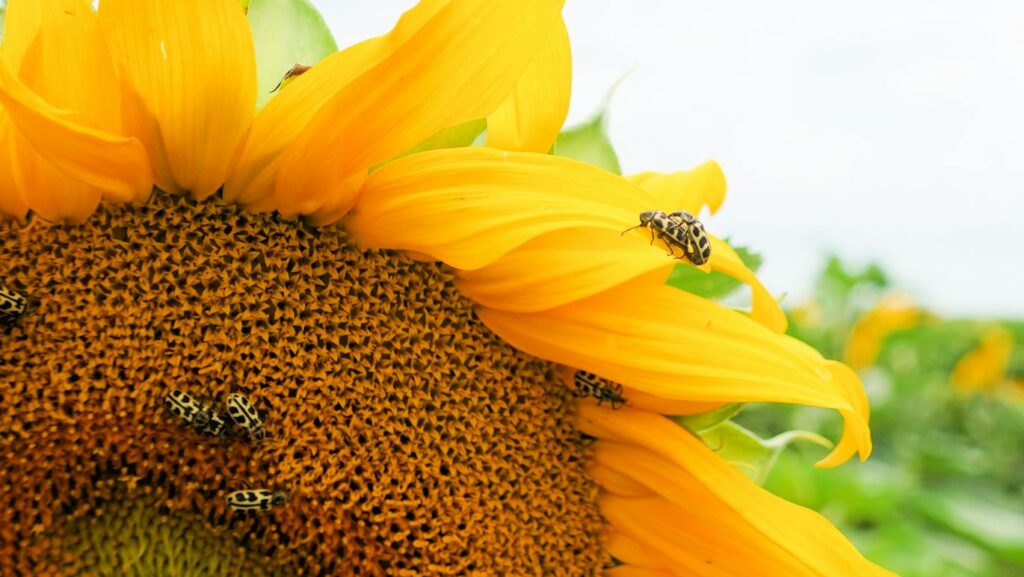
Beetles represent the oldest group of pollinators on Earth, with fossil evidence suggesting they were visiting flowers over 200 million years ago, long before bees evolved. With over 400,000 species, beetles form the largest order of insects and a significant percentage of these interact with flowering plants, though often in less specialized ways than bees or butterflies. Unlike many dedicated nectar-feeders, beetles typically consume flower parts along with pollen, earning them the nickname “mess and soil” pollinators for their somewhat destructive feeding habits. Many ancient flowering plant families show adaptations specifically for beetle pollination, including magnolias, water lilies, and spicebush, which typically produce bowl-shaped flowers with easily accessible pollen and strong fruity or spicy scents that attract their beetle visitors. In tropical forests, beetles play a particularly vital role in pollinating trees and understory plants, contributing significantly to the reproduction of economically important species like cocoa, the source of chocolate.
Flies: The Underestimated Pollinators
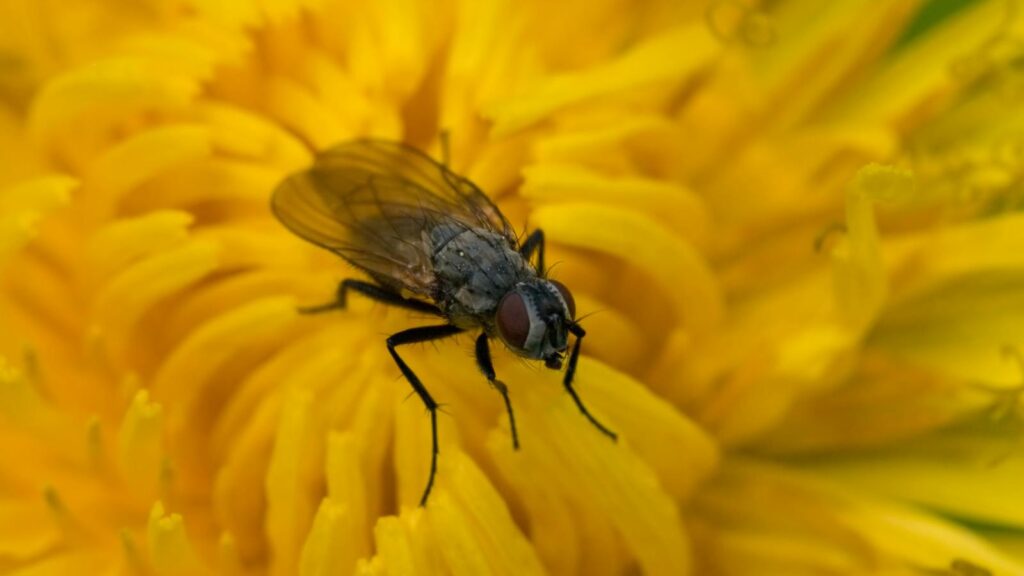
Flies represent one of the most diverse and abundant groups of pollinators globally, yet their contributions to pollination are frequently overlooked and undervalued. Unlike bees, many flies can remain active in cool, wet, or high-elevation conditions where other pollinators struggle, making them crucial backup pollinators in challenging environments. Hover flies (family Syrphidae) are particularly effective pollinators, with bee-like appearance and behavior, visiting a wide range of flowers and transferring substantial amounts of pollen during their frequent flower visits. Some plants have evolved specific adaptations to attract fly pollinators, including those with carrion-scented flowers that mimic rotting meat to attract flesh flies, a strategy employed by the remarkable corpse flower (Amorphophallus titanum) and various stapelia species. Agricultural research has increasingly recognized flies as important crop pollinators, with studies showing they contribute significantly to pollination of crops including cocoa, mango, apple, strawberry, and onion, sometimes providing better pollination services than bees for certain crop varieties.
Wasps: The Predatory Pollinators
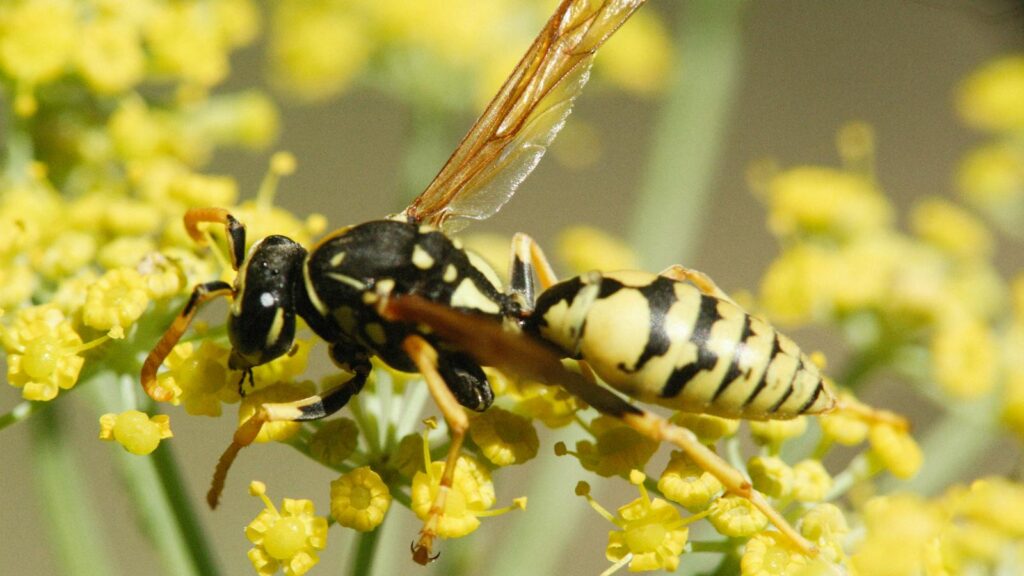
While often feared for their stings, many wasp species serve as valuable pollinators, visiting flowers to consume nectar that fuels their hunting activities. Fig wasps demonstrate one of nature’s most intricate pollination relationships, with nearly 1,000 species of wasps that each pollinate a specific fig tree species, entering the fig fruit to lay eggs and transferring pollen in the process – a relationship so specialized that neither the wasps nor the fig trees can reproduce without their specific partner. Unlike bees, wasps generally have smooth, less hairy bodies that don’t collect as much pollen, but they make up for this with frequent flower visits and, in some cases, remarkable precision in their pollination activities. Orchid wasps (also called euglossine bees, though they’re actually wasps) are crucial for pollinating many tropical orchid species, with male wasps collecting aromatic compounds from the flowers to attract females, inadvertently transferring pollen during these scent-collecting visits. In agricultural settings, wasps contribute to the pollination of crops including mango, guava, and various ornamental plants, providing additional pollination services while also helping control pest populations.
Ants: The Ground-Dwelling Flower Visitors
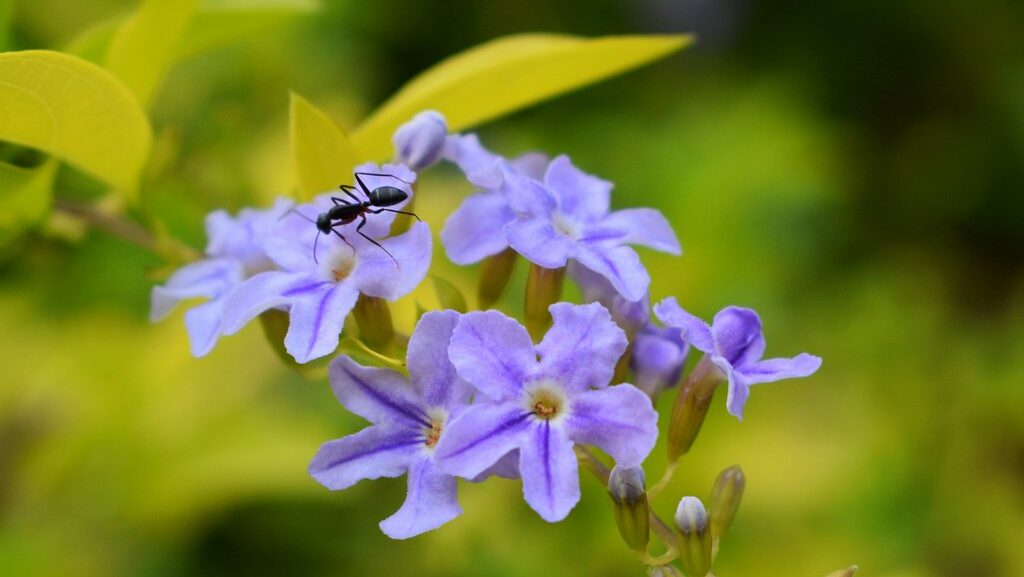
Ants represent some of nature’s most abundant insects, and while they aren’t typically considered major pollinators, recent research has revealed their significant contributions to the pollination of certain plant species. Unlike flying pollinators, ants move methodically from flower to flower on the same plant, which can limit cross-pollination between different plant individuals but can be effective for self-compatible plant species. Many ant-pollinated plants share common characteristics: they typically grow close to the ground, produce small flowers with easily accessible nectar, and often occur in harsh environments like deserts or alpine regions where flying pollinators may be scarce. The relationship between ants and extrafloral nectaries (nectar-producing glands located outside flowers) represents a fascinating ecological connection, with plants providing nectar rewards that attract protective ants that defend against herbivores while occasionally assisting with pollination. Studies in Mediterranean ecosystems have documented successful ant pollination of various plant species including rock rose (Cistus), thyme species, and certain geraniums, demonstrating these tiny insects’ unexpected role in plant reproduction.
Thrips: The Tiny But Mighty Pollinators

Thrips may be minuscule insects, often just 1-2mm long, but these tiny creatures play a surprisingly important role in pollinating certain plant species around the world. Despite their diminutive size, thrips can occur in enormous numbers, with thousands sometimes inhabiting a single flower, collectively transferring significant amounts of pollen through their activities. These insects show particular importance in pollinating plants with small, clustered flowers such as onions, garlic, chives, and other allium species, as well as certain tree fruits and cocoa. In tropical forests, thrips are major pollinators for dipterocarp trees, giant timber species that form the canopy of Southeast Asian rainforests and depend on synchronized mass flowering events that attract clouds of thrips pollinators. Unlike larger pollinators, thrips can access the tiniest flower structures and often complete their entire life cycle within flowers, feeding on pollen, nectar, and plant tissues while inadvertently transferring pollen as they move between blossoms.
Lizards: The Surprising Reptilian Pollinators

Lizards represent one of the more unexpected groups of pollinators, particularly on islands where insect diversity may be limited and lizard populations reach high densities. On islands in the Caribbean, Mediterranean, and Pacific, various lizard species regularly visit flowers to consume nectar, pollen, or small insects, inadvertently transferring pollen on their scales and faces as they move between blossoms. Studies of the Canary Island lizard (Gallotia galloti) have documented its essential role pollinating the endemic Canary bellflower, with these plants showing specific adaptations to attract lizard visitors, including tough flowers that can withstand lizard climbing and nectar production timed to lizard activity patterns. The New Zealand gecko demonstrates another remarkable example of reptile pollination, visiting the flowers of native flax plants and transferring pollen while feeding on nectar, contributing to the reproductive success of plants that evolved in the absence of many typical pollinators. Research on lizard pollination highlights an important ecological principle – that pollination relationships can evolve whenever animals regularly visit flowers, regardless of whether those animals are the “typical” pollinator types we normally consider.
Non-Honeybee Bees: The Overlooked Specialists
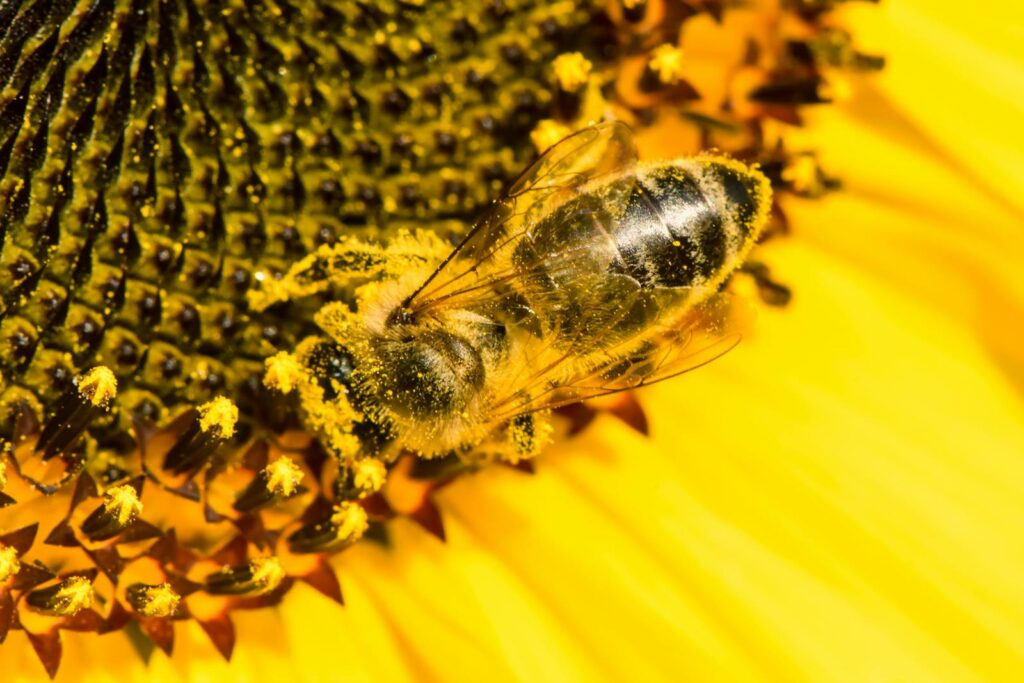
Beyond the familiar honeybee exists a tremendous diversity of bee species – over 20,000 worldwide – that provide critical pollination services but receive far less attention than their honey-producing relatives. Native solitary bees like mason bees and leafcutter bees are often more efficient pollinators than honeybees for specific crops, with studies showing that a few hundred orchard mason bees can pollinate an acre of apple trees as effectively as tens of thousands of honeybees. Bumblebees perform specialized “buzz pollination,” vibrating their bodies at specific frequencies to release pollen from certain flowers including tomatoes, blueberries, and cranberries – a technique honeybees cannot perform, making bumblebees irreplaceable for these crops. Many wild bee species have co-evolved with specific native plants, creating interdependent relationships where each species relies on the other for survival, such as the specialized relationship between squash bees and cucurbit crops or mining bees and spring ephemeral wildflowers. Unlike managed honeybees, most native bees nest in soil, wood, or plant stems rather than hives, requiring different conservation approaches that protect both foraging habitat and nesting opportunities.
Nonflying Mammals: Rodents, Marsupials and More

Several nonflying mammals have evolved as effective pollinators, particularly in regions where typical pollinators may be scarce or in habitats with specific floral adaptations. In South Africa, the Cape rock elephant shrew plays a crucial role in pollinating Protea species, visiting the low-growing flowers to lap nectar and transferring pollen on their long snouts as they move between plants. Australian possums and other marsupials frequently visit eucalyptus and banksia flowers, serving as important pollinators for these iconic Australian plants that have evolved brush-like flowers perfectly positioned to dust pollen on the faces of visiting mammals. Rodents like mice and rats contribute to pollination in various ecosystems, with notable examples including the Hawaiian Metrosideros trees pollinated by native honeycreeper birds and introduced rats that have partially replaced these endangered bird pollinators. These mammalian pollination systems typically share common floral traits: robust flowers that can withstand climbing, nocturnal nectar production aligned with mammal activity patterns, and often strong, musky scents that appeal to mammal visitors rather than the sweet fragrances that attract insect pollinators.
Conservation Challenges For Non-Bee Pollinators
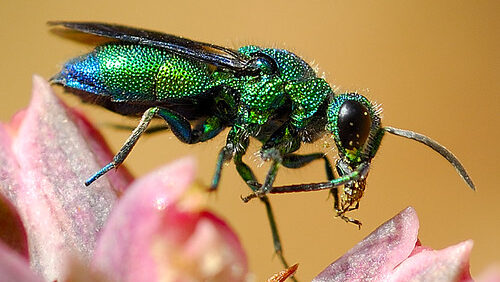
Non-bee pollinators face unique conservation challenges that often differ from those affecting honeybees, requiring specialized approaches to their protection. Unlike managed honeybees, most alternative pollinators are wild species dependent on natural habitats that are increasingly fragmented by development, agriculture, and infrastructure, creating isolated populations vulnerable to local extinction. Many specialized pollinators like certain butterfly species have complex life cycles requiring multiple habitat types – flowering nectar sources for adults and specific host plants for their larvae – meaning conservation efforts must protect this full spectrum of resources across landscapes. Climate change poses particular threats to timing-sensitive relationships between pollinators and the plants they service, with warming temperatures potentially creating mismatches between when flowers bloom and when pollinators emerge or migrate to an area. Traditional pesticide risk assessments have historically focused on honeybees, potentially overlooking different exposure pathways and sensitivity levels in non-bee pollinators like butterflies, beetles, or vertebrate pollinators, creating regulatory gaps that leave these species vulnerable. Effective conservation requires increased research, monitoring programs specifically designed to track non-bee pollinator populations, and habitat protection strategies that consider the unique ecological requirements of these diverse and valuable species.

While honeybees rightfully receive attention for their pollination services, the remarkable diversity of alternative pollinators highlights nature’s redundancy in maintaining critical ecological functions. From daytime butterflies to nocturnal moths, from tiny thrips to nectar-feeding bats, these diverse creatures collectively ensure the reproduction of countless plant species across the globe. Each pollinator group brings unique specializations – whether it’s the long-distance travel of bats, the buzz-pollination of bumblebees, or the cold-weather resilience of flies – creating a web of plant-pollinator relationships that sustains biodiversity and food production. As we work to protect pollinators, a holistic approach that recognizes and supports this full spectrum of pollinating animals offers the best chance for maintaining healthy ecosystems and secure food systems in an increasingly changing world.
